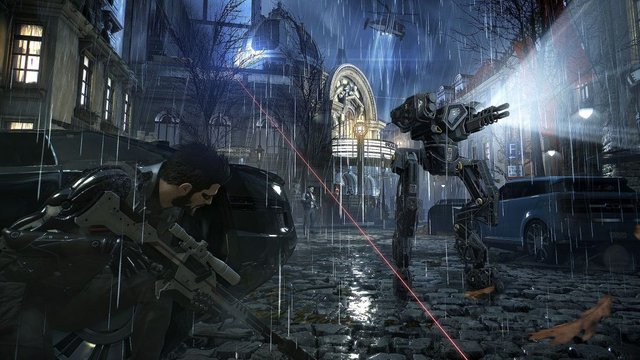Hints: #7 --- Your Setting is also a Character
This post was co-published at talanhorne.com
It's that time again.

Welcome back to Hints, a miniseries of Mr. Horne's Book of Secrets.
Having problems? Well, you could ask for advice, but any advice you get could mess up what you already have. Advice givers only know how to write a book that suits them, not one that suits you.
And yet, you still find yourself looking for somewhere to turn. It's not always helpful to figure things out from scratch.
What you could really use...is a hint.
“Hints: because you only need a little help.”
Fiction is Association
A famous writer of westerns once said:
If you are inclined to leave your character solitary for any considerable length of time, better question yourself. Fiction is association, not withdrawal.And this statement is easy enough to verify. Just think back to every work of fiction you have ever read, and ask yourself how often any character was left on their own for an extended period of time.A. B. GUTHRIE, JR.

You can probably think of a least a couple. And yet, these moments are undeniably rare. Still, if some well known examples exist, then there must be a way to do it in your own writing.
How is that accomplished?
Personification
Say you have a story about someone who, through circumstances beyond their control, is forced to live alone in the wilderness for a time.

Funny how this was the first thing you thought of. And that I knew you were thinking of it.
This story could cover weeks or even months of isolation. If fiction is association, and not withdrawal, then how do you write such a story?
And for the purposes of finding a real solution, I am forbidding you to cheat. So, for example, you are not allowed to throw in convenient "pseudo characters" to fill out your cast, such as ghosts...

Or non-intelligent robots...

Or hallucinations...

Or a bunch of really stupid talking-animal sidekicks.

Without access to any of these cheats, how do you write a convincing story of solitary survival in the wilderness?
Well, to give you a hint within a Hint, you should know that there is a name for these particular kinds of stories: their archetype is called "Man vs. Nature". And that should give you a good idea of who the other character in your story is, apart from the human who finds themselves in isolation.
That's right: in these kinds of stories, "Nature" is the other character, and this is pulled off through the miracle of personification.
For our purposes, we shall define personification as the transformation of the story's setting so that it becomes a character. In this way, the setting becomes a silent, omnipresent personality for the main character to interact with. And this is most easy to observe in "Man vs. Nature" stories, as we see the natural forces that threaten the main character's survival.
However, this is not the only situation where personifying the setting makes for a good story.
Hint of Many Uses
You don't need to have a single solitary main character before you personify a setting. In the right situation, the setting can interact with a whole host of characters and become just one member of a mighty ensemble cast.
Consider, for example, the cyberpunk genre.

A cyberpunk story may feature many characters, but all of those characters interact with an ever-present and often oppressive setting. Cyberpunk settings are often so endemic to the story that they take on a life of their own. The setting can fill the role of the oppressive dictator, the unforgiving schoolteacher, or even the toxic lover. And the journey of the cyberpunk hero usually has them conquering not just some villainous despot, but the society that created such a despot. Only when the cyberpunk hero has convinced the world to change has he actually slain his particular dragon.
The same principle can translate to any dystopia, and from there it can springboard off to any genre that uses dystopia, which includes most science fiction and fantasy.
But society can become a character even in realistic settings, such as stories where strict social hierarchies and proprieties can act as a stifling antagonist to our free-spirited main character. A good example of this would be any Jane Austen romance, where the unwritten rules of society loom over the characters like a stern taskmaster. Likewise, the circumstances of Victorian England have their own face in every story of Dickens.
How it Benefits You
But, naturally, the idea that personification is possible does not imply that personification is needed. The above examples do not, on their own, prove that you need to follow in their footsteps. But permit me to make a case as to why you should consider personifying your setting.
I would argue that personifying a setting is one of the few writing practices that has no drawbacks, only benefits. If, as Mr. Guthrie said, fiction is association, then giving your fiction another meaningful association can only make it richer. If personification, as a tool, is powerful enough to make an abstract concept like Nature itself into a functioning character, in a story with no other characters than the protagonist, then imagine how much it could enrich any kind of story with any number of characters.
By having your characters interact with the setting, you make the setting more real, and less like you've got a group of people acting out the story in some kind of simulated holodeck.

If your story is too disconnected from the backdrop, then it might as well be occurring in front of a green screen. And there's no stronger way to establish your setting than by giving it certain desires, expectations, and actions for or against the other characters.
And personifying the setting does not take away air from the other characters. Dickens was known to put dozens of characters into even the briefest of stories, yet he still found room to personify places like London and Paris as if they were shadows that haunted his protagonists.
Conclusion
Making your setting into its own character, even though that character is usually nebulous and unseen, is perhaps the easiest way to enrich a narrative.
Once you've done that, you not only have a protagonist making associations with other characters, you have a protagonist living inside an association with another character, meaning that every moment of the narrative becomes an exploration of that association. Every part becomes impactful, and, as a writer, that kind of impact translates into concentrated narratives that tantalize and please.
I honestly don't think I can give a better hint than this one (though I'll certainly try as this miniseries goes on). If your writing seems a little limp, and you're looking for ways to inject life into a story, I would recommend you consider this as one of your first go-to options.
@talanhorne,
Now i understood how all great writers wrote those amazing books (Specially novels). You made a great hint and advice for all who wish to join this field!
Cheers~
Such a wonderful and interesting article by @talanhorne sir...
Excellent work sir...
Upvoted and Resteemed...
Cheers~~~~
Wow very interesting article my dear friend
I am glad to receive your tips
very good job my dear friend
thanks for sharing with us
Really excellent writing @talanhorne
sir.
I really enjoy to read your writing.
Thanks for sharing.
100% upvote and resteem done.
@talanhorne sir....
Actually I'm really like ur smart ideas...great mortivation...smart and uncommon ideas...perfect works sir...
Ur writting skills are excellent sir...
Keep it up posting...happy steeming ...
Wel done sir...
I love such shows/movies where there is suspense and hint given for it. Great post @talanhorne!
ps: I would like to know your decision about delegation?
Ohh, it's interesting and perfect information. Thank you
You're a good knowledge person about writing and it's very difficult.
Your job is excellent Blog.
Thanks @talanhorne
Have a nice day
you have made certain things very clear
good job
You couldn't have said it better. Nailed it actually